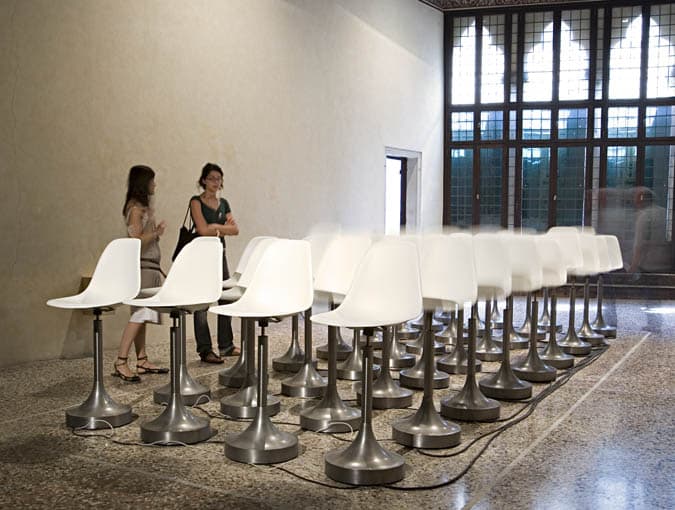Beryl Graham / Professor of New Media Art at the University of Sunderland, and is co-founder of CRUMB resource for curators of new media art.
In the 1960s, artists like Nam June Paik were using the emerging technology of video, as soon as it was available. Right now, artists are using any new media necessary for their work, from eBay or AI software, to interactive projections in public places (see Rafael Lozano Hemmer). The excitement of new media art involves not only new aesthetics, but also new systems of behavior including connected networks, computation, and interactivity. Because I am a curator of art exhibitions, my concern is that these exciting artworks meet their audiences effectively, by understanding these behaviors.
Curators at museums have already found new ways of working. The 2009 exhibition Decode: Digital Design Sensations, at the Victoria and Albert Museum in London, saw curator Louise Shannon include open-source software for audience use, and a tour which adapted the exhibition for China or Russia. The museum is also collecting digital works by Casey Reas, and via the Rapid Response Collecting project, a 3-D printed gun.
Some freelancers have used international commercial online platforms to curate in innovative ways. Curators Marilaura Ghidini, and Rebekah Modrak, for example, used eBay, the product selling site, as a venue for exhibiting art, in the 2017 project #exstrange. The artworks could be viewed online, and purchased if desired. The “questions” field on eBay formed a way for audiences to dialogue with the artists. Artist Renuka Rajiv offered to make live hand-drawn portraits from Skype screens, described her art as “New with defects” and showed a witty understanding of interaction on commercial online platforms. Artists will often be critical of technology and commercial systems, but in playful and creative ways.
Although interaction and participation might now be familiar to audiences, collaborating is still much less common, especially if these collaborations work across the disciplines of art, technology and science.
Cross-Sector Collaboration
“I am not a new media artist, nor a post-internet one … I … include technology in my work if it enhances and fits with my ideas” (Lu Yang 2018)
In terms of crossing the disciplines of art and technology, then young artists such as Lu Yang, might well be puzzled about traditional separations of technological media from art, as her artworks use media from Augmented Reality to fabric kites. However, in both educational and cultural organisations, cross-disciplinarity is difficult in practice. Even the divide between the disciplines of art and design remains an issue for curators, especially in the UK, where there are strong historical hierarchies between art and commercial sectors.
Curator and researcher Dr. Suzy O’Hara has worked consistently on cross-sector collaborations between commercial digital and publicly-funded art areas, with a particular interest in systems of crediting, time, and money, which enable an equal ‘balance of power’ between the sectors. She commissioned a close pairing of artist/designer Dominic Wilcox and creative technologist James Rutherford to make Binaudios, a set of giant audio binoculars, for Thinking Digital Arts at Sage Gateshead. She also worked with Creative Spring to produce the Inventors! project with artist Dominic Wilcox. Dominic worked with over 450 schoolchildren to invent products, and then to make them, with the help of startups, craftspeople, and the international Fab Lab Network. Since then, she has researched cross-sector issues in Africa and Mexico, working with Victoria Bradbury on a book concerning the working methods of Art Hack Practice. Her work on the Arts and Humanities Research Council Creative FUSE project, which found that start-ups with integrated art/technology skills made more money than those without art skills, relates strongly to the current movement in education that ‘Art’ should be fully integrated with Science, Technology, Engineering and Mathematics subjects (that is, STEAM rather than STEM).
With the aim of fusing skills across sectors, so that artists and curators can innovate, each year our Professional Development one-week course Curating Art After New Media provides a chance to get together international curators, labs, makers, programmers, designers and artists, for updating and for ways forward. Collaboration not only makes it easier to share expertise and hence to cross sectors, but also makes for new exhibitions such as Right Here, Right Now.



